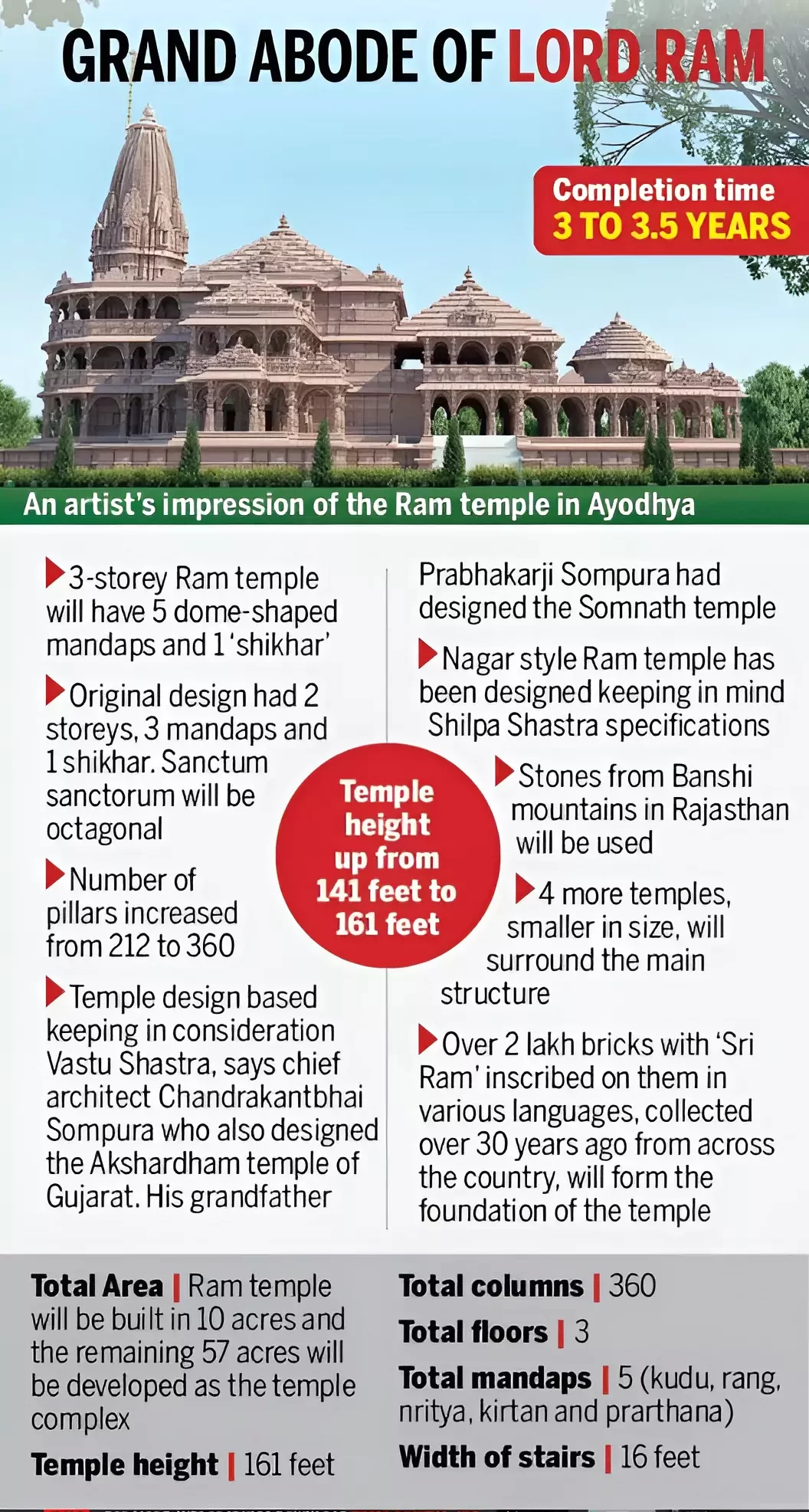Context: The Prime Minister of India will be attending the consecration ceremony of the Ram Mandir, marking the inauguration of temple in Ayodhya on January 22 2024.


The inauguration of the Ram Mandir in Ayodhya will mark the end of one of the long-standing land disputes in independent India.
| Must Read | |
| NCERT Notes For UPSC | UPSC Daily Current Affairs |
| UPSC Blogs | UPSC Daily Editorials |
The Ram Mandir in Ayodhya will be inaugurated on January 22 2024 with the placing of the idol of the main deity.
The Ram Mandir is designed in the Nagara Style, and highly inspired from Gujara-Chalukya style of Nagara style of architecture.
The chief architect of the temple is Chandrakant Bhai Sompura, who also designed the Akshardham temple in Gujarat.
The Shri Ram Janmabhoomi Teerth Kshetra trust will be supervising the construction of the temple.
Ram Lalla Virajman, the infant form of Lord Rama, an incarnation of Lord Vishnu, is the presiding deity of the temple.
The dispute in Ayodhya revolved around the control of a site traditionally regarded among Hindus to be the birthplace of Lord Rama, the location of the Babri Masjid mosque at the site, and whether a previous Hindu temple was demolished before building the mosque.
The Ram Janmabhoomi movement was started by the Vishwa Hindu Parishad in the 1980s to reclaim the site for Hindus and build a temple dedicated to the infant Rama (Ram Lalla) at the spot.

<div class="new-fform">
</div>